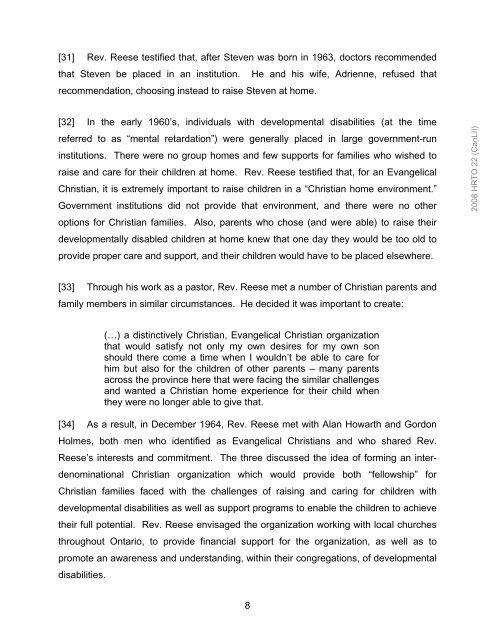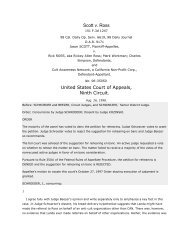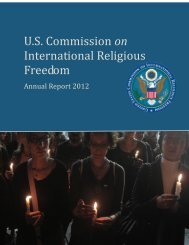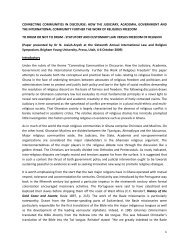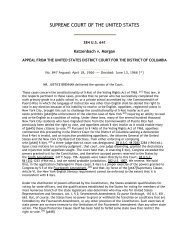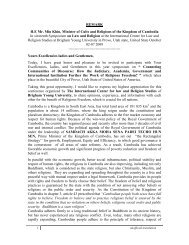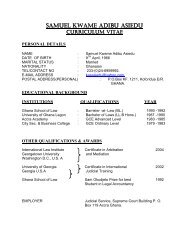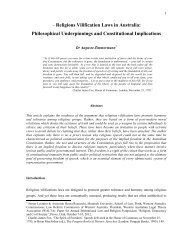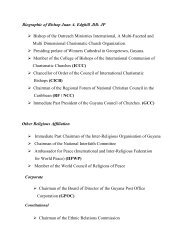Ruling (.pdf) - International Center for Law and Religion Studies
Ruling (.pdf) - International Center for Law and Religion Studies
Ruling (.pdf) - International Center for Law and Religion Studies
Create successful ePaper yourself
Turn your PDF publications into a flip-book with our unique Google optimized e-Paper software.
[31] Rev. Reese testified that, after Steven was born in 1963, doctors recommendedthat Steven be placed in an institution. He <strong>and</strong> his wife, Adrienne, refused thatrecommendation, choosing instead to raise Steven at home.[32] In the early 1960’s, individuals with developmental disabilities (at the timereferred to as “mental retardation”) were generally placed in large government-runinstitutions. There were no group homes <strong>and</strong> few supports <strong>for</strong> families who wished toraise <strong>and</strong> care <strong>for</strong> their children at home. Rev. Reese testified that, <strong>for</strong> an EvangelicalChristian, it is extremely important to raise children in a “Christian home environment.”Government institutions did not provide that environment, <strong>and</strong> there were no otheroptions <strong>for</strong> Christian families. Also, parents who chose (<strong>and</strong> were able) to raise theirdevelopmentally disabled children at home knew that one day they would be too old toprovide proper care <strong>and</strong> support, <strong>and</strong> their children would have to be placed elsewhere.2008 HRTO 22 (CanLII)[33] Through his work as a pastor, Rev. Reese met a number of Christian parents <strong>and</strong>family members in similar circumstances. He decided it was important to create:(…) a distinctively Christian, Evangelical Christian organizationthat would satisfy not only my own desires <strong>for</strong> my own sonshould there come a time when I wouldn’t be able to care <strong>for</strong>him but also <strong>for</strong> the children of other parents – many parentsacross the province here that were facing the similar challenges<strong>and</strong> wanted a Christian home experience <strong>for</strong> their child whenthey were no longer able to give that.[34] As a result, in December 1964, Rev. Reese met with Alan Howarth <strong>and</strong> GordonHolmes, both men who identified as Evangelical Christians <strong>and</strong> who shared Rev.Reese’s interests <strong>and</strong> commitment. The three discussed the idea of <strong>for</strong>ming an interdenominationalChristian organization which would provide both “fellowship” <strong>for</strong>Christian families faced with the challenges of raising <strong>and</strong> caring <strong>for</strong> children withdevelopmental disabilities as well as support programs to enable the children to achievetheir full potential. Rev. Reese envisaged the organization working with local churchesthroughout Ontario, to provide financial support <strong>for</strong> the organization, as well as topromote an awareness <strong>and</strong> underst<strong>and</strong>ing, within their congregations, of developmentaldisabilities.8


